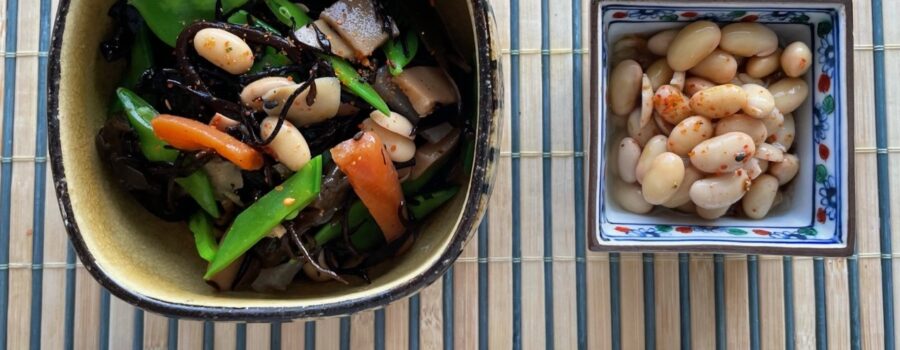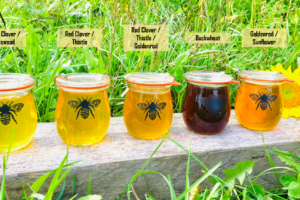From Tofu Triumphs
Five years ago, we launched the ultimate Firefly adventure of selling fresh, organic raw soybeans grown on our family farm in southwest Michigan. We published our first soyful (soulful + joyful) blog post #SoybeansAreAwesome. Ben started that feature writing ‘Soybeans are awesome, and I’m here to spread the word.’ Not to one-up Ben, but as I pen this five years later, I say ‘Soybeans are even MORE AWESOME than we ever could imagine, and I’m here to tell you why!’
From such simple beginnings those years ago, we knew the powerhouse capabilities of soybeans for the soil, humans, and the environment. Our early admiration stemmed from mostly a nutritional and environmental perspective. We knew about organic soymilk and tofu, even incorporating these staples regularly into our home kitchen. We shared a few recipes (e.g. soymilk, tofu, soyfritas, unohana) on the website. Feeling so accomplished (ha!) in our tofu game, and we were ready to share with others how easy it was to make your own in the kitchen. Friends, you already know this, but same goes for tofu and soymilk – it’s so much better homemade. What we didn’t know then and have since learned now was what an incredible journey and world that would open up with one simple bean – the organic soybean.

To Tempeh Temptress
Back then, aside from our loving friends and family, we would be lucky if anyone found our fledgling website. There’s this thing called SEO (Search Engine Optimization) that basically ranks how well someone can search for content and actually find it on your website across the world wide webs. If you searched ‘Firefly Fields’ during our first three years of business, you wouldn’t find us on the first 12 pages. Beyond our immediate, friendly network, the chances of people finding our home page, recipes, and stories was slim to none. Until,… suddenly, someone did. Norah!! Early in 2019, Norah Ylang of Handcrafted Ferments by Norah (lovingly nicknamed the ‘Tempeh Temptress,’ see image below) from Chandler, Arizona found Firefly and Firefly’s Organic Soybeans!
On that day of discovery, our very first organic soybean customer and super fan/advocate was born. Norah’s knowledge, fun disposition, and passion for empowering people to make affordable and flavorful fermented foods at home is flat-out contagious. Two years and a tempeh workshop later (in 2021) Norah was generous enough to share her Fermenting Your Own Tempeh at Home recipe and community with us (we highly recommend taking an online workshop with Norah – she literally holds your hand through the entire fermentation process). We have long considered soybeans one of the BEST ‘gateway’ foods for venturing out into world cuisine right at home in our kitchen. Yet, what has truly set this adventure apart has been the people we get to bond with over the food grown on our family farm. A new level of understanding and appreciation opens for the humble soybean when you learn from someone like Norah (with family roots in Southeast Asia) – unlocking a whole new world of depth, flavor and understanding to the gastronomical possibilities.



Over time, we have met so many amazing people – caregivers, bean connoisseurs, artists, home chefs, and Firefly Friends generously sharing and taking us to new places through this simple soybean. How wonderful to exchange stories with Ayano Matsumae, a Japanese artist (check out Ayano’s amazing nature photography) born in Tokushima, Japan growing up in many rural areas and now living and working on the east coast United States. Through her perspective and beautiful imagery, we learned more about the slow fermentation process (>10 months) of soybeans to prepare miso ‘so sweet and delicious.’ How the soybeans from our farm are much more responsive, only taking two hours to cook after pre-soak instead of the usual three hours. Beyond the beans, we connected over a shared love of nature that seems to be a consistent theme with many of our Firefly Friends. Ayano shared with us this YouTube video (see below) to a popular Japanese children’s song, ‘Hotaru Koi’ (Firefly Come!). The anime is so cheerful. We just love it and know any other Firefly and nature lover will too!
Hotaru Koi (Firefly Come!)
‘Ho, ho, fireflies come!
Over there the water bitter* (*impure)
Over here the water is sweet** (**pure)
Ho, ho, fireflies come!
Ho, ho, come by the mountain road!’
Unleashing Miso Magic
The value of giving time in understanding is profound exposing the multifaceted nature of any topic, especially when it comes to farming, food, and family. While the history of soybeans in the Americas is in its relative infancy (not grown in the U.S. until 1765), we need only look to the far east to find ancient traditions that have long cultivated and elevated the complexities and nuances of this amazing legume. It is from these long, fermented traditions, we can discover some of the most inspired and delicious soybean cuisine.

Soybeans originated in East Asia, and ancient Chinese records indicate that soybeans were grown as early as 2838 B.C. Initially used for crop rotation to fix nitrogen in the soil, over time, soybeans became an important part of the Chinese diet. Interesting, how many things in life eventually connect us directly back to the soil and ground beneath our feet – good for the soil and good for us. Soybeans spread to other parts of the world like Japan and Korea, where traditional soy-based foods such as tofu, miso, and soy sauce were further cultivated. Apparently, soy sauce was discovered by accident when miso makers noticed a dark liquid accumulating in the tubs during the production process. It wasn’t until World War II, the U.S. government promoted soybeans as a protein-rich alternative during meat shortages. Fast forward, today, soybeans are a staple in many diets and are recognized as a valuable and delicious plant-based protein.

Culinary Traditions and Dishes Featuring Soybeans
We look forward to highlighting and experimenting with more soybean dishes in 2024. For now, here is a highlight reel of some culinary traditions and dishes featuring soybeans:
Tofu: The universal soybean shape shifter, tofu has a neutral flavor absorbing the flavors of the ingredients you cook with, whether they be savory or sweet. From silken to firm, served cold and hot, as a side dish or main dish – soups, stir fries, and more – this is by far the most versatile bean curd in the kitchen.
Miso: A traditional Japanese seasoning produced by fermenting soybeans with salt and koji (a type of fungus). Commonly used to make miso soup and as a flavoring in various dishes, the fermentation process can last from a few months to several years! The flavor of miso can range from sweet to salty, and the color from light beige to deep reddish-brown. Taste is influenced by ingredients used, fermentation duration, and regional variations.
Soy Sauce: While it is believed to have originated in China dating back 2500 years, it has become an essential ingredient in many cuisines worldwide. Traditional soy sauce is a fermented mixture made from soybeans, wheat, salt, and water to add flavor and depths to a wide range of dishes.
Edamame: So simple, so delish, green young soybeans in the pod often served steamed or boiled. The word ‘edamame’ is Japanese and translates to ‘stem bean’ in English, referring to the way the beans are attached to the stem when they are harvested.
Soybean Sprouts: Have you ever sprouted your own beans at home? Soybean sprouts are commonly used in Korea cuisine, featured in soybean sprout rice or seasoned and stir fried nicely with garlic, green onion, pepper, sesame seed & oil, soy sauce, fish sauce, and honey.
Tempeh: YUM! Check out Norah’s Recipe. Tempeh is a traditional Indonesian food made from fermented soybeans used in so many dishes. Fermenting soybeans not only unlocks next level nutrition, it also unlocks all the flavor. Fortunately, it doesn’t take 9 months to ferment, you can enjoy within a couple of days!
Soy Milk & Tofu Desserts: This plant-based alternative to cow’s milk has been around for centuries, and is a staple in many diets, especially for individuals who are lactose intolerant or following a vegan or plant-based lifestyle. In Thai cuisine, soy milk and tofu are often used in sweet desserts.
Soy Burgers and Meat Alternatives: Thank western cuisine for the soy-based products like veggie burgers, soy sausages, and soy crumbles for meat alternatives. A lot of these ‘soy-based alternatives’ are highly processed and contain numerous additives.




From those early Firefly ‘Tofu Triumphs’ to the recent day ‘Miso Magic,’ we continue to grow in awe of the AWESOMENESS that are soybeans. Yes, soybeans are one of a few plant-based foods considered complete protein, containing all nine essential amino acids that the body cannot produce on its own (amazing!). But, aside from all the practical intents and purposes this powerhouse brings, what a culinary adventure? Exploring the diverse and delicious ways soybeans can be incorporated into various dishes has never been so fun! We invite you all to join us on this sweet and savory soybean adventure.
Please, tell us more in the comments! There’s so much we don’t know!
Here’s to making new friends and soyful dishes in 2024!






1 Comment
Leave your reply.